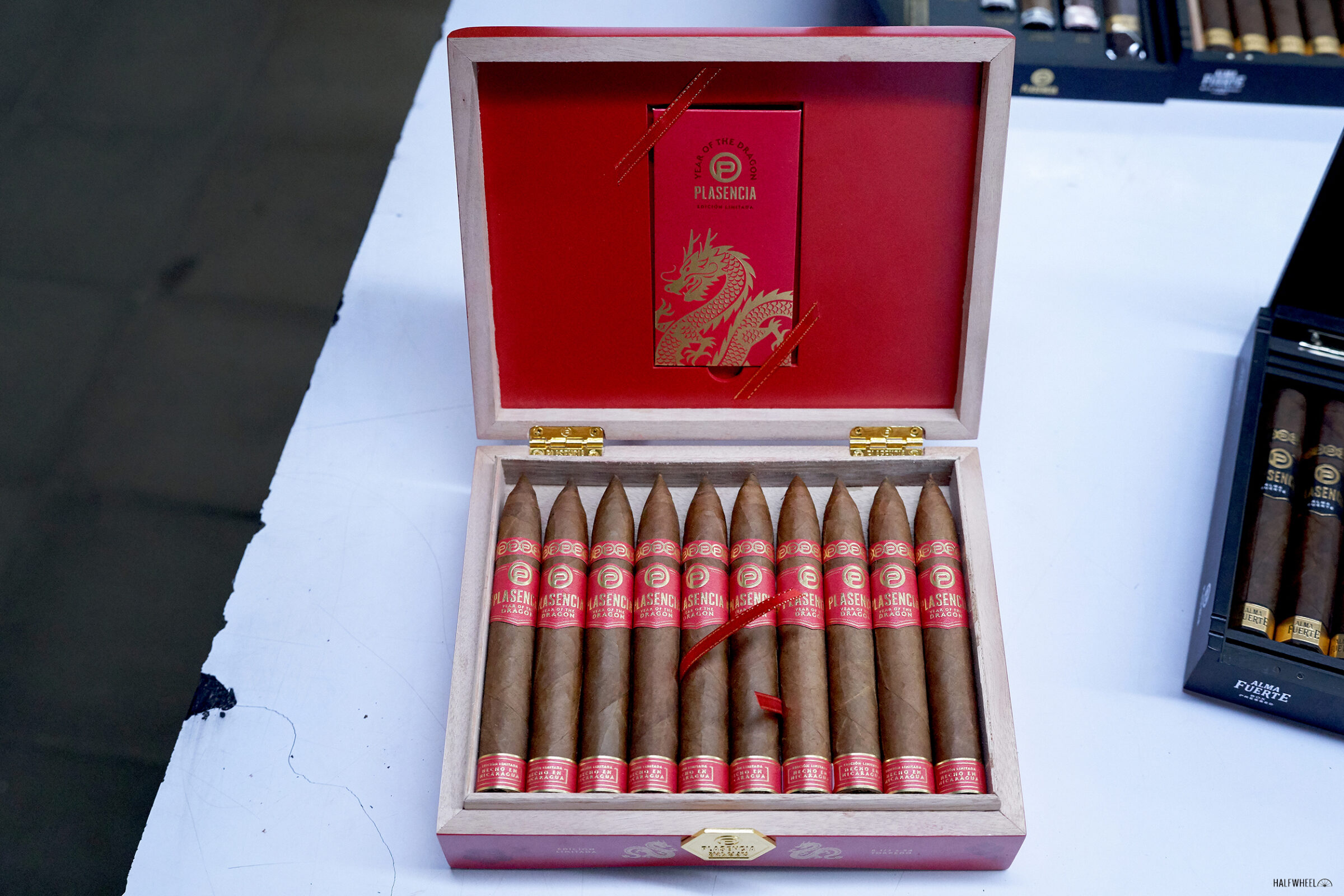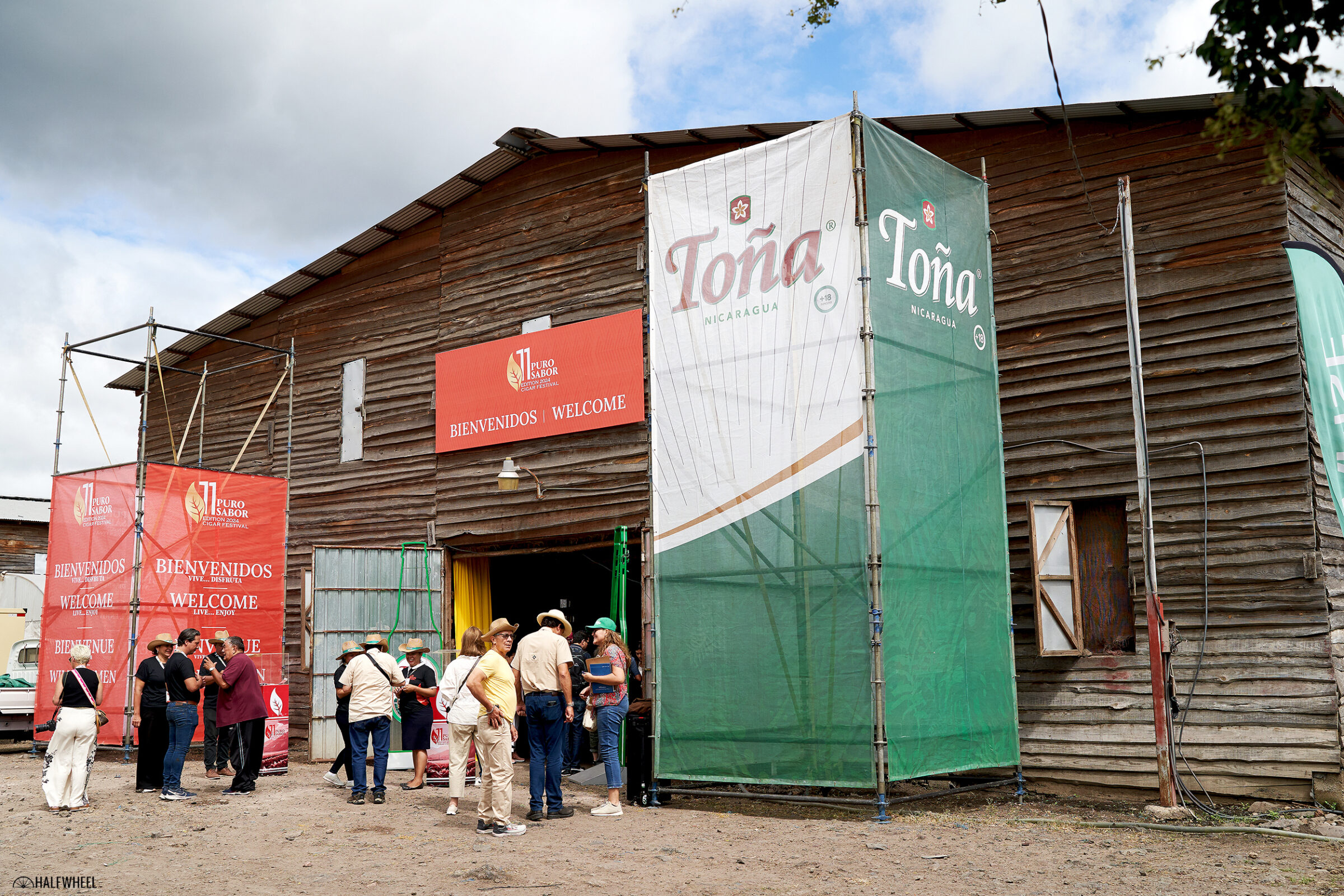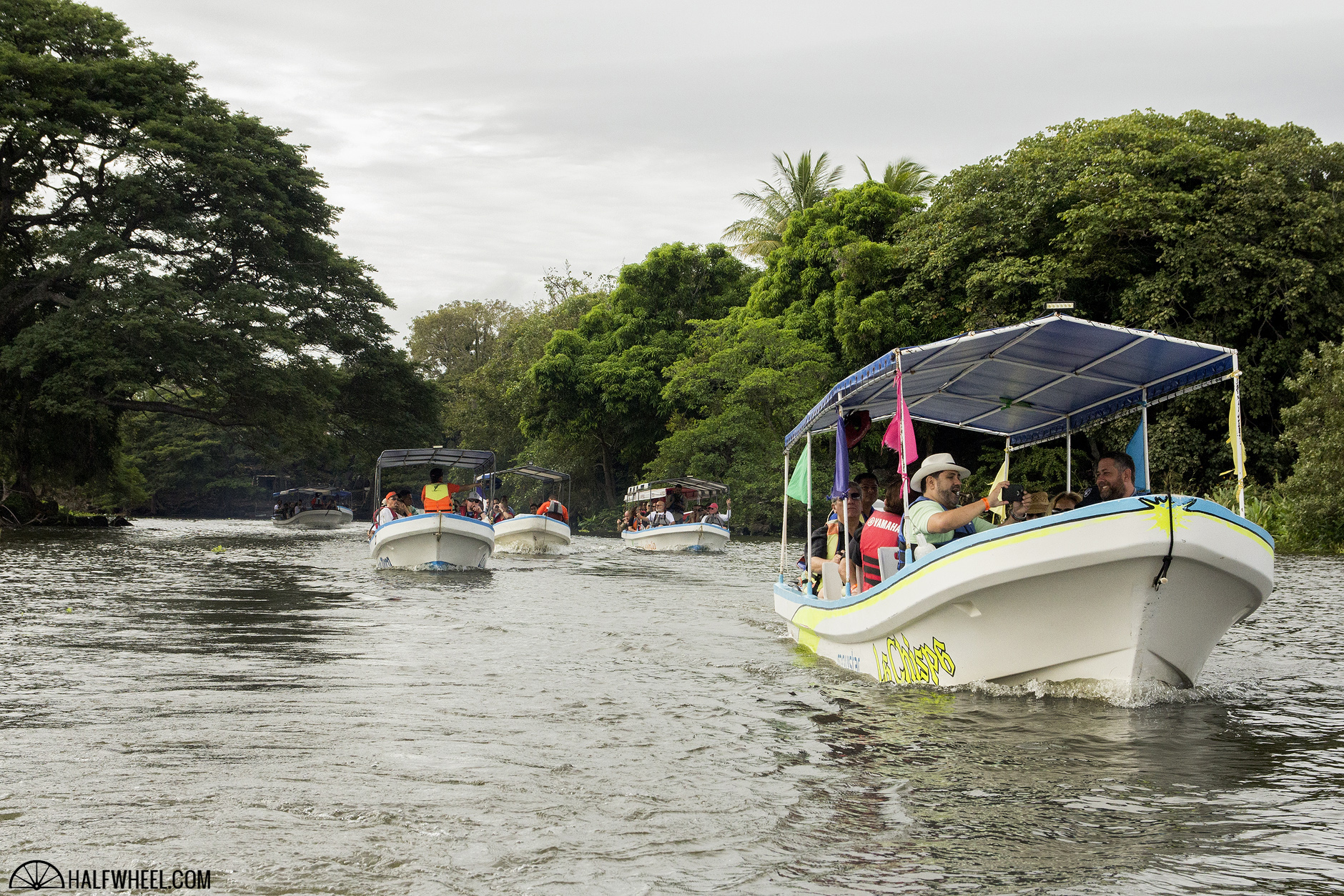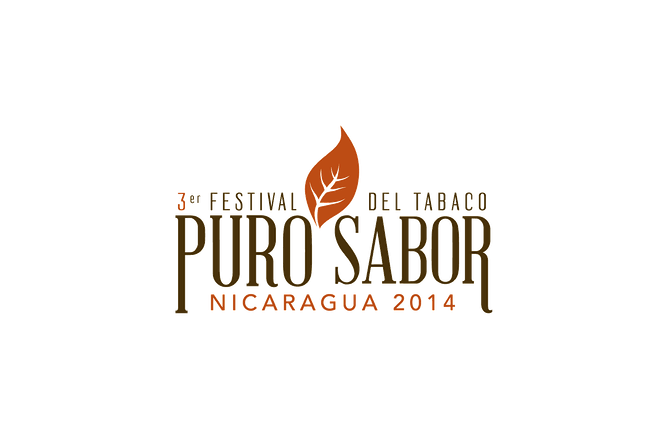When I started writing about cigars some 15 years or so ago, I didn’t envision that I would be making multiple trips to Nicaragua to not just meet the people who produce those cigars but get to talk with them about their products, important issues in the industry and how they are doing away from the fields and factories. And I certainly didn’t imagine that I would spend a year waiting to talk about fertilizer and compost.
While Day 5 of the 2024 Puro Sabor festival began on Friday, for me its roots trace back one year ago to Jan. 26, 2023, when I happened to find myself sitting near Nestor Andrés Plasencia at lunch. We started talking and we got to his areas of expertise, namely tobacco growing, agronomy, and a number of things that I find interesting but don’t know nearly enough about, particularly since I don’t get to visit tobacco farms nearly as often as I would like. I don’t remember the exact wording of our conversation, but there he remarked about how if I liked their tobacco, I would love their fertilizer, an interesting comment that led to a half-hour conversation about the intricacies of making fertilizer and what kind of incredible benefits it could have for the cigar industry.
Fast forward one year, and I found myself just a few hundred feet from where we had that conversation, standing next to Plasencia and holding a worm in my hand, taking it away from its job of making that fertilizer.
My group headed to the Plasencia farm in Estelí for a fairly early start to the day, meaning a 7:45 a.m. pickup from my hotel and after getting the rest of the group, a roughly 8:30 a.m. arrival. We were welcomed with a pair of Alma del Campo cigars and handshakes from several members of the Plasencia team, and from there, it was onto see just how the Plasencia team is working to bring regenerative agriculture to the tobacco industry.
“You can’t use the environment as a competitive advantage,” Plasencia told the group, adding that he hopes to see the process adopted by more growers in the near future.
While organic farming has been around for a while, regenerative agriculture seeks to bring life to the soil and is rooted in biomimicry, essentially looking at what nature does on its own and trying to replicate it. Plasencia started working with organic farming and tobacco back in 1999 but feels that this latest chapter could be truly transformational, saying that there is reason to believe he could be fertilizer-free in 10 years.
The company gathers green waste, such as unusable tobacco leaves in the fields; brown waste such as stems and leaves, cardboard and cow manure and creates piles made up of ratioed layers of the core ingredients. Those piles are tended to not that much differently from how pilones of tobacco are, with this farm machine turning over the layers so they can be repacked.
Once the base is ready, it is transported up the hill to concrete holding containers where the worms get to work, turning that into usable fertilizer. When it is ready, it can be liquified and sprayed or dropped by hand in a solid form.
Then it was off to the seedling nursery to see the earliest stages of the tobacco growing process, planting the seeds, waiting for the first sprouts to appear, and then taking the healthiest and strongest looking and setting them on a path to hopefully becoming part of a premium cigar. We were fortunate to be joined by Nestor Plasencia Sr., who is still going strong in his mid-70s, working with the teams on the farms to produce tobacco.
The progression of the tour largely followed that of the tobacco itself, as we moved from the nursery to a field and then a curing barn, which was getting filled up. Across Estelí some tobacco is getting harvested, while some plots are just being planted.
Plasencia also explained that while the tobacco is the most visible part of the farm, there is a lot going on underneath the soil as well, including the network of water pipes that sit approximately 20 inches beneath the surface of the soil, and which allow the tobacco to be watered directly where the plant is. There is also work being done to grow certain crops next to tobacco so as to further enrich the soil and essentially feed the plant from the bottom as opposed to adding fertilizer to the top of the soil.
With the farm part of the visit complete, it was off to the company’s factory, and as soon as we pulled up, we were greeted by several young children and several of the staff members who welcomed us with handmade signs, candy, and dances. Plasencia is one of a growing number of companies that have opened schools for its workers’ children, launching the first one in 2015. They now have three, with a fourth in the works for Honduras, with approximately 250 children attending classes.
That would be the first of many greetings given to our group, first a musical one by a local band playing traditional Nicaraguan music, then the buncheros and roleros giving us a traditional welcome by banging their chavetas on their tables as we enter the rolling room, and the workers in one of the sorting and fermenting areas giving us a round of applause.
As I have said numerous times before, there are always lots of interesting things to see in a factory, and Plasencia is no different. While I would never claim that they are the first or only to do something, it was pointed out that they use oval-shaped pilones to help keep the heat in the piles even, as the corners of the pilon tend to be a bit cooler and thus the leaves don’t get an even treatment.
Also, the company uses wireless sensors to relay information about the pilon to a website that can be viewed by members of the management team, and if something goes wrong, they can get alerts signaling a need to come and address the issue.
Just as on the farm, we followed the tobacco through its journey in the factory, arriving at the packaging room to see the soon-to-be-released Plasencia Year of the Dragon, a 6 1/2 x 54 torpedo with an all-Nicaraguan blend. More details are coming soon, but I was told it will begin shipping to retailers in the coming week.
The visit wrapped up wth some ice cold beer, a selection of baked goods, more music, and conversation with members of the Plasencia team. It was truly a remarkable visit that had me glad I made it a priority for this year’s trip, and a facility I’m certainly looking forward to returning to, hopefully before too long.
Lunch was next up, with Rocky Patel hosting it in one of the curing barns at his Finca Villa Cuba farm that I visited earlier in the week.
As expected, he showed off pictures of his new factory that is set to break ground in a couple of weeks and hopes to have completed in 18-24 months.
With only one visit on the agenda today, that meant attendees had the afternoon to themselves to explore the city, rest up or get packed up for Saturday’s departure. But there was still one function left to hold: the closing gala at Oliva’s Las Mesitas facility, which I visited on Wednesday and which was the site of last year’s gala.
The event was the largest evening event of the week, with several hundred people attending, many of whom work in the premium cigar industry or are adjacent to it; for instance, a tobacco grower from Mexico was in town this week and attended the evening events.
The night generally doesn’t come with major announcements, though in alternating years, a new president of the Cámara Nicaragüense de Tabacaleros (CNT), also known as the Nicaraguan Chamber of Tobacco, is elected and announced. Manuel Rubio, general manager of Drew Estate, who served his two-year term following his election in 2022, opened the night with a welcome and his final speech as head of the CNT.
While it was expected that the new president would be announced, that did not happen, and for no apparent reason other than that the moment to do so quickly turned into a group photo opportunity and then back to the musical entertainment, which was headed by the Camerata Bach, a 23-piece symphony-esque group playing a decent range of music throughout the evening. I’m told an announcement is forthcoming, but it was odd not to use this opportunity to announce who will lead the organization for the next two years.
What was announced were the dates of next year’s festival, Jan. 20-25, so mark your calendars and get your airfare lined up early.
Other than some rain that swept through the area and tested the fabric covering some of the seating area and dancefloor, the night went off beautifully and the festival came to its grand conclusion just as the clock was hitting 1 a.m.
CLOSING THOUGHTS
This year’s Puro Sabor festival was the first that noticeably altered the schedule I had become accustomed to over the past several years, swapping out the Granada trip for one to Condega. This was due to the changes to Casa Favilli, the former home of the Mombacho/Favilli brands; as regular cigar production had ceased there. While the building had been slated to become a cigar-themed tourist destination at last check, those plans appear to have been scrapped.
I always enjoyed going to Granada and visiting Casa Favilli, as I found it a very welcoming building, especially with the way its first-floor lounge naturally invited people in to sit, smoke, and socialize. But that reality doesn’t exist anymore, though if you want to buy the building and bring it back, it is on the market.
Did it make an appreciable difference not being in Granada? Not inherently, though it also seemed to mean fewer activities that weren’t cigar-related. I understand that the festival likes to show off more of Nicaragua than just the cigar industry, and that was lacking this year, as there were no visits to volcanoes, coffee plantations, or Lake Nicaragua and its 365 little islands. I’ve heard chatter about plans to bring that back in 2025 and possibly go to León, another historical city in the country that is celebrating its 500th anniversary this year.
I will say that the opportunity to see Condega was one I was excited to have as part of this year’s schedule, as I had yet to visit this important growing area. Having been there now, it makes me wonder why I hadn’t seen it before. It’s much closer to Estelí than I imagined, and the road was quite passable, seemingly in the same quality as that between Managua and Estelí. I’d welcome the opportunity to return as well as to see other areas if possible, particularly Ometepe, which I understand is feasible to do but not without some logistical challenges due to the ferry schedule and the weather affecting the availability of those boats.
Having seen Puro Sabor grow and continually refine its operations over the past several years, the little stumbles that occurred with the delay in getting the welcome box of cigars to participants, the bumbled first half of the Condega trip, and the lack of an announcement of the new president felt odd and, hopefully, are things that will get addressed. I know multiple people within CNT are aware of these things, and I trust that they are already working on ways to tighten things up for 2025. I’m not sure where exactly to assign responsibility, as there was a new event organizer brought in fairly late in the planning process, yet for most of the week, I can’t say I would have noticed if I hadn’t already known about it.
From my perspective and that of several participants I talked to over the week, the 2024 Puro Sabor Festival should be chalked up as a success. Consumers told me they felt more informed and more appreciative of the cigars they smoke, and look forward to applying their experiences in Nicaragua when they light up their next cigars back home. There was no shortage of great conversations, engaging presentations and new experiences with which to return home.
I must give credit to a number of people who played integral roles in carrying out the festival; first, the member companies who welcomed guests into their factories, farms, and other facilities. Someone told me how impressed they were to actually see the heads of these companies leading the tours, answering questions and making themselves available throughout the week. I have long held that the conversations that are able to be had during Puro Sabor are what really make it succeed, and this year was no different. And that praise extends not just to the faces of the companies but to all the individuals who make these companies run on a daily basis and take time out of their already busy schedules to welcome a bunch of wide-eyed visitors.
But those people who head up and work for the cigar and tobacco companies can’t be everywhere, and much of the daily interaction around the logistics of the tours lands in the laps of a group of tour guides who bring their knowledge of Nicaragua and ability to navigate seemingly every hurdle put in front of them. Many of these independent contractors have worked with Puro Sabor for several years, and seeing them has become much like seeing an old friend, with time spent catching up on our respective life events since the last one.
Likewise, I have to give credit to Luis Baez, who serves as the emcee for the week’s lunches and dinners, in addition to his work as an advocacy manager for Flor de Caña. He’s been the host for the large events seemingly for as long as I’ve been coming to Nicaragua, and his ability to navigate a bilingual crowd, do on-the-spot translations, and just keep the events moving does not go unnoticed.
I also want to give credit to the Best Western Las Mercedes for the food and food service staff, including an army of servers who were absolutely on top of their game this year, as well as to the traditional bands who played the White Party. That marimba band—I believe they were called Rocknola Nica—was fantastic in getting the party started. And in all honesty, all the music I heard this week was great; maybe being in Estelí made the music sound sweeter, but I’ve got plenty of songs now swirling around in my head.
And since we’re talking music, I have to give a sincere thanks to the CNT for doing the best job I’ve seen of keeping the music at reasonable levels until it was time to really get the party going.
Thanks should also be said to city of Estelí for welcoming us in with open arms. The city continues to grow and spread, and as I have mentioned previously, I am impressed by the number of new businesses that seem to be opening, particularly in the discretionary income category. Gyms, beauty salons, and a costume shop, were just a few of the things that caught my attention this trip.
As I head home, I’m already thinking about how the things I learned, the connections I made, the conversations I had, and the overall experience of Puro Sabor 2024 will affect how I interact with cigars and the industry as a whole. I have no doubt they will, and I look forward to continuing them at Puro Sabor 2025.












